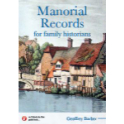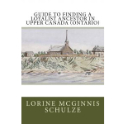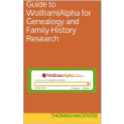Manorial Records for Family Historians
$8.50
The aim of this book is to cut through a complex mix of social and legal history to give family historians the knowledge and confidence to start utilising English and Welsh manorial records. 80 pages
Digital (.pdf) Download Only
Description
Manorial Records for Family Historians
Geoffrey Barber, 2017, Publisher: Unlock the Past
Digital (.pdf) Download Only
The manorial system, introduced to England and Wales by the Normans, lasted until 1926 and the surviving records can provide wonderful insights into the personal lives of our ancestors.
Henry Chandler wrote in 1885 that manorial records ‘enable us to drop down suddenly on an obscure English village five hundred years ago, and almost to see with our own eyes what the inhabitants are doing’. However, it seems that few genealogists understand manorial records, and how the manor operated.
The aim of this book is to cut through a complex mix of social and legal history to give family historians the knowledge and confidence to start utilising these records. Once understood, the rewards are immense.
The book also contains many examples of how records from the manors of Rotherfield in East Sussex and Datchurst (alias Hildenborough) in Kent were used by the author in how own research.
Contents:
Introduction
Access to manorial records
The origins of the manor
The manor: an overview
Social structure on manorial estates
– Freemen (free tenants)
– Villeins (unfree tenants)
Administration of the manor
Land tenure
– Demesne land
– Copyhold or Customary tenure
– Freehold land
– Leasehold land
Manorial courts
– Court Leet
– Court Baron
A description of the Manor of Rotherfield, Sussex in 1400
Locating property using manorial records
– Example 1. Widow Barber’s Cottage
– Example 2. Drapers
– Example 3. Bonnetts
Conclusion
Glossary
Further reading
Index
This ebook is a the same as the printed version from Unlock the Past which is available from Gould Genealogy & other retailers. Pages can be searched, browsed, enlarged and printed out if required.









